
How to Use GLYPHMOD-2-CH-Relay: Examples, Pinouts, and Specs
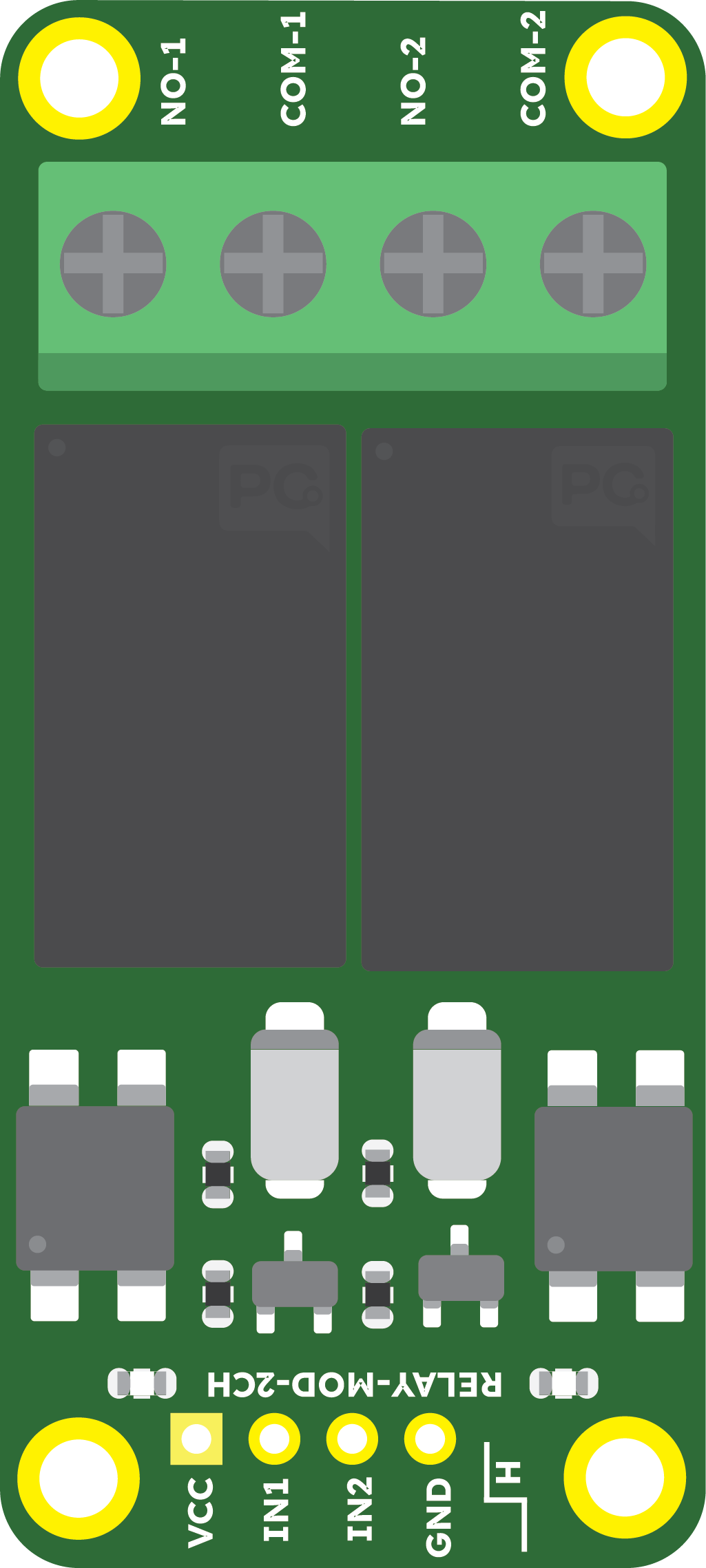
 Design with GLYPHMOD-2-CH-Relay in Cirkit Designer
Design with GLYPHMOD-2-CH-Relay in Cirkit DesignerIntroduction
The GLYPHMOD-2-CH-Relay (Manufacturer Part ID: GM-001) is a dual-channel relay module manufactured by PCBCUPID. It is designed to control high-voltage devices using low-voltage control signals, making it ideal for applications requiring electrical isolation and safety. The module features opto-isolation to protect sensitive control circuits from high-voltage spikes and interference.
Explore Projects Built with GLYPHMOD-2-CH-Relay
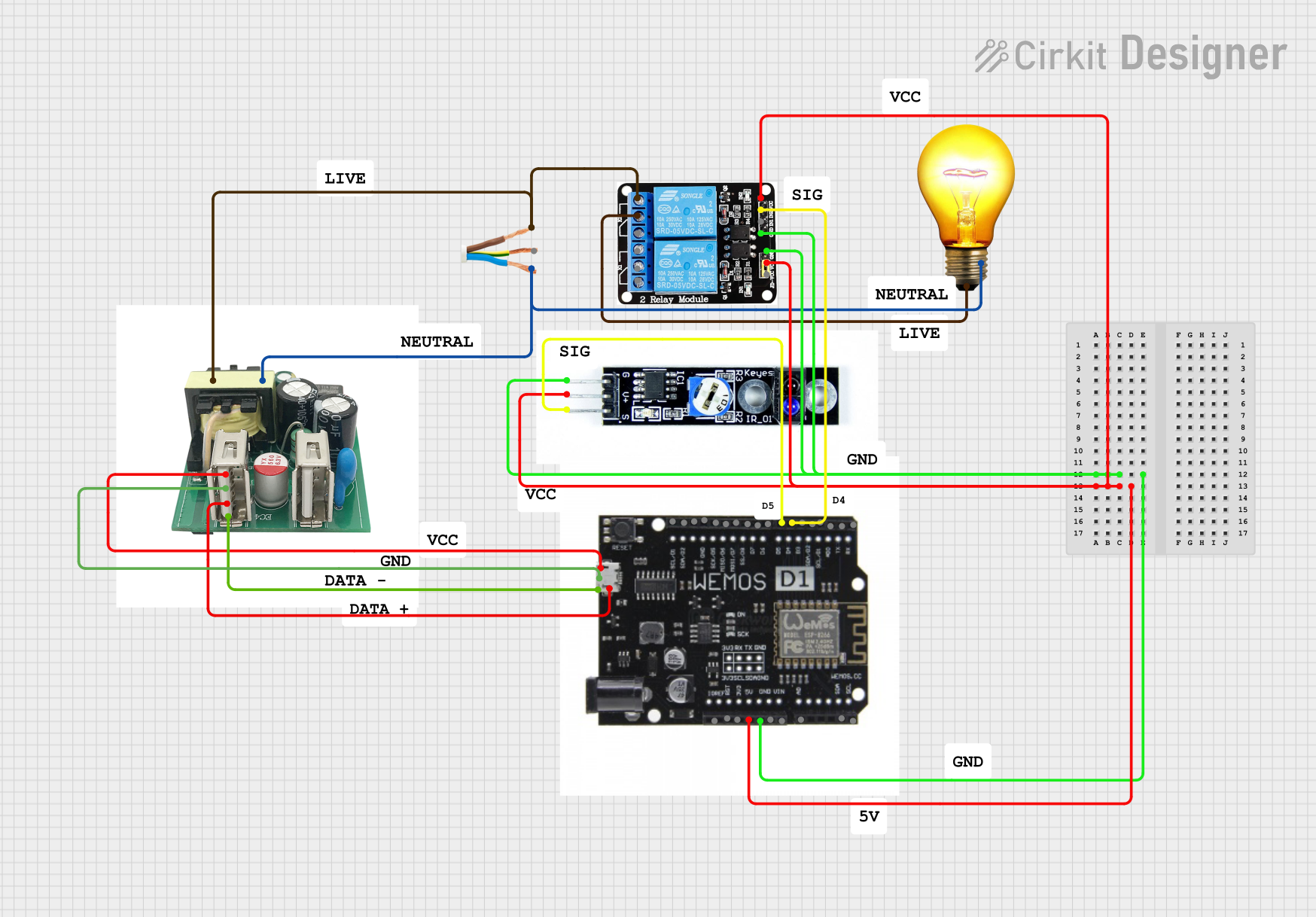
 Open Project in Cirkit Designer
Open Project in Cirkit Designer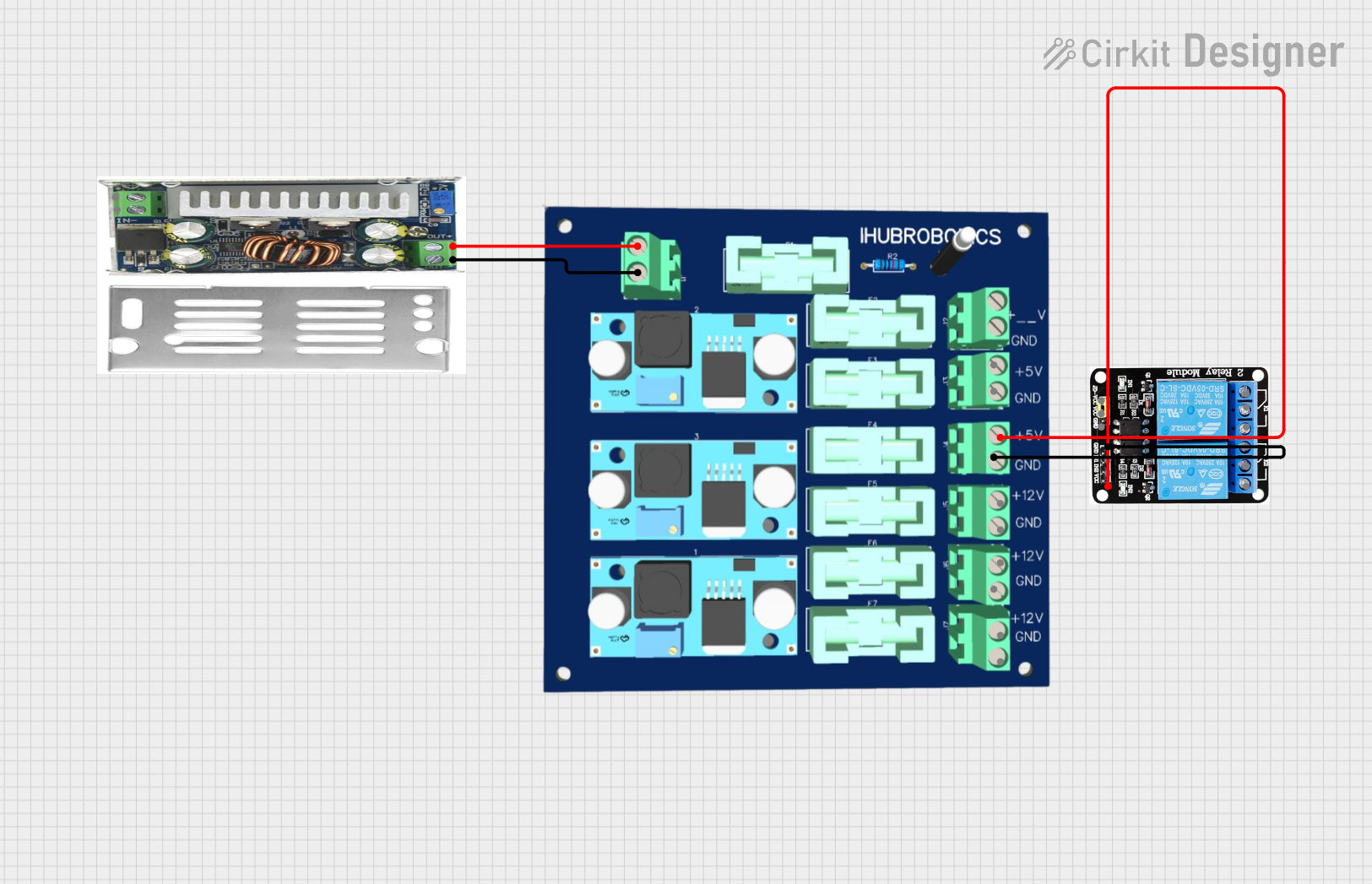
 Open Project in Cirkit Designer
Open Project in Cirkit Designer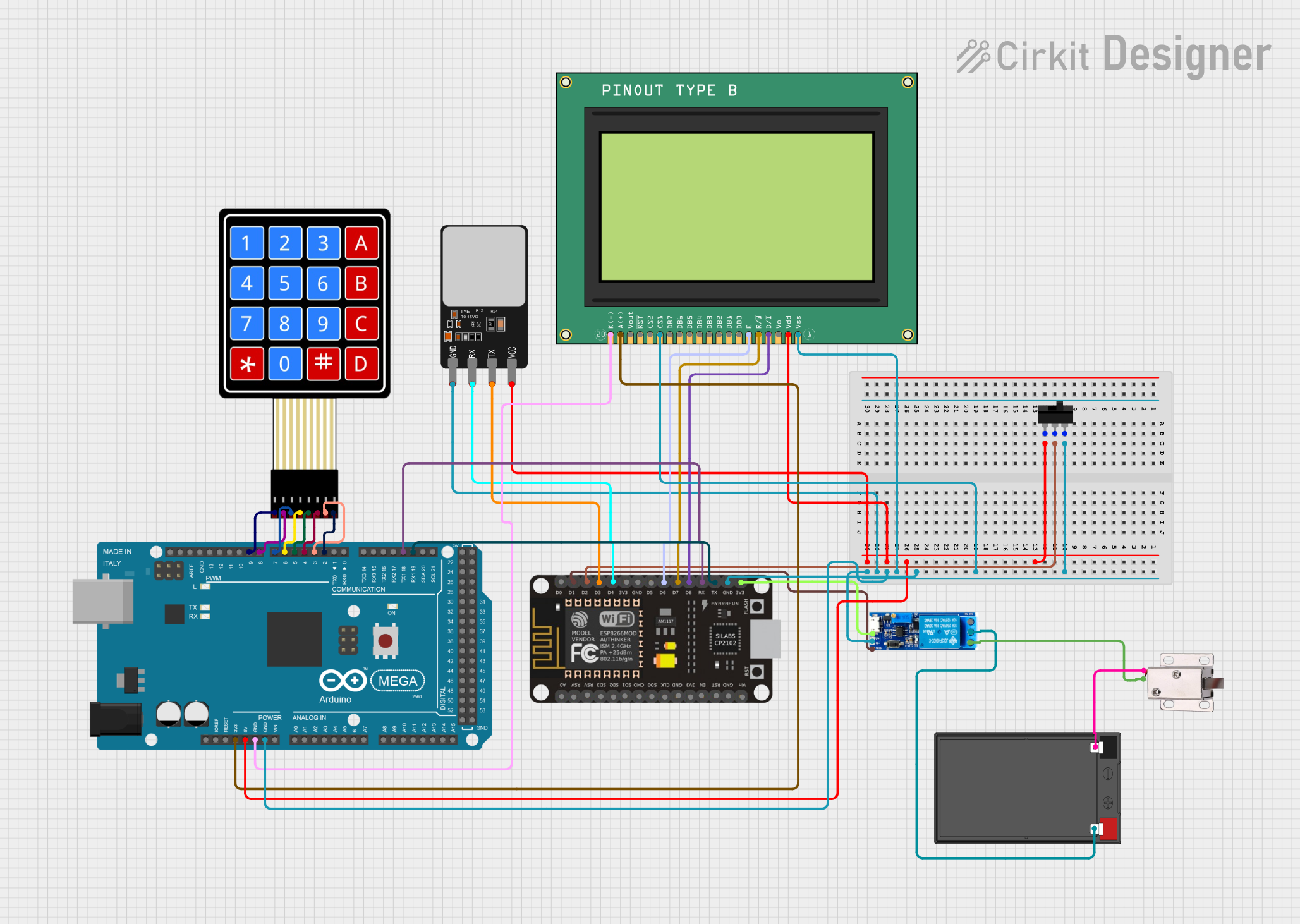
 Open Project in Cirkit Designer
Open Project in Cirkit Designer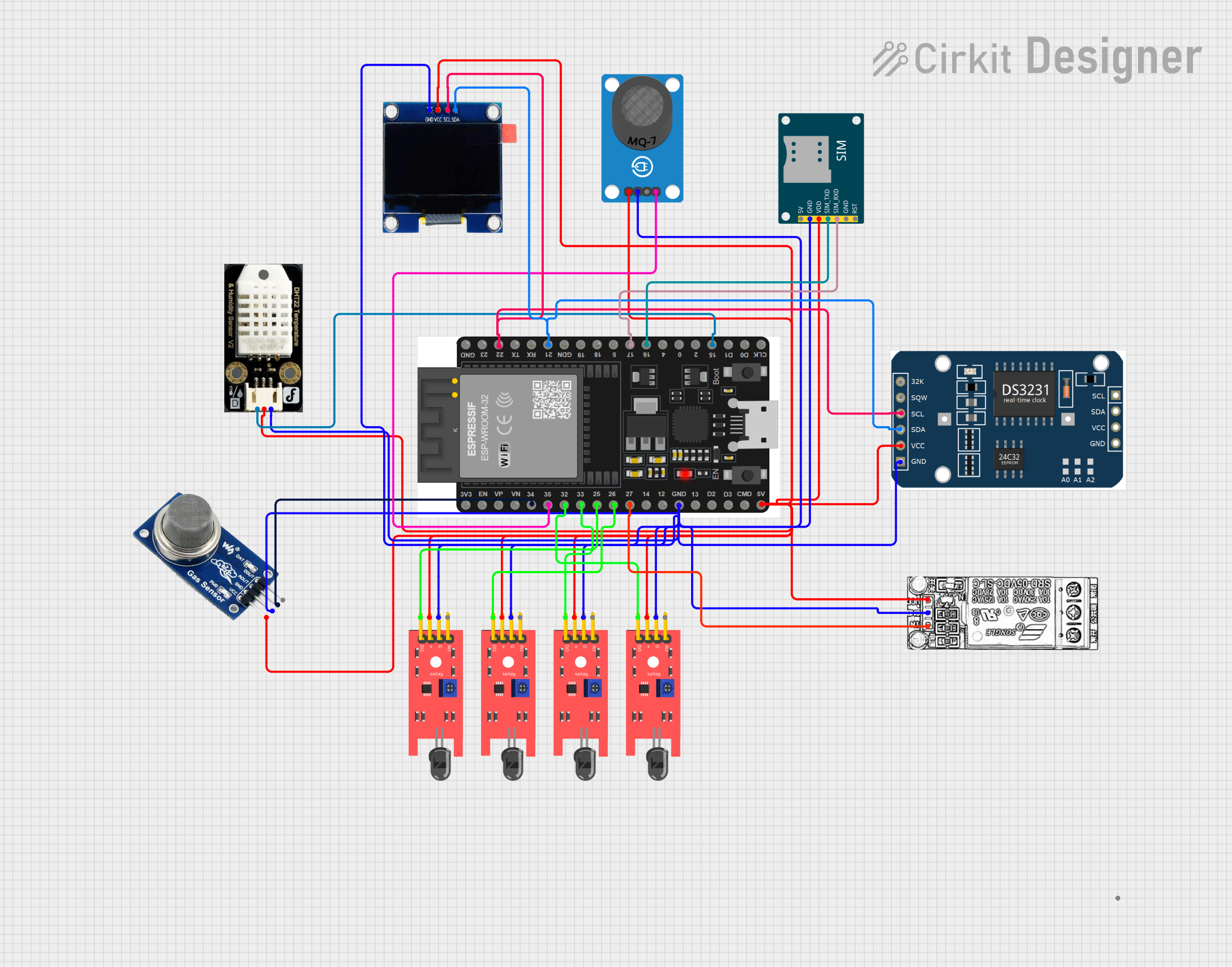
 Open Project in Cirkit Designer
Open Project in Cirkit DesignerExplore Projects Built with GLYPHMOD-2-CH-Relay

 Open Project in Cirkit Designer
Open Project in Cirkit Designer
 Open Project in Cirkit Designer
Open Project in Cirkit Designer
 Open Project in Cirkit Designer
Open Project in Cirkit Designer
 Open Project in Cirkit Designer
Open Project in Cirkit DesignerCommon Applications and Use Cases
- Home automation systems (e.g., controlling lights, fans, or appliances)
- Industrial control systems
- Robotics and IoT projects
- Motor and pump control
- Signal isolation in sensitive circuits
Technical Specifications
The following table outlines the key technical details of the GLYPHMOD-2-CH-Relay module:
| Parameter | Specification |
|---|---|
| Operating Voltage | 5V DC |
| Trigger Voltage | 3.3V to 5V DC |
| Relay Type | SPDT (Single Pole Double Throw) |
| Maximum Load Voltage | 250V AC / 30V DC |
| Maximum Load Current | 10A |
| Opto-Isolation | Yes |
| Dimensions | 50mm x 40mm x 18mm |
| Mounting Holes | 4 x M3 holes |
| Weight | 25g |
Pin Configuration and Descriptions
The module has two sets of pins: Input Pins for control signals and Relay Output Terminals for connecting the load.
Input Pins
| Pin | Name | Description |
|---|---|---|
| 1 | VCC | Power supply input (5V DC) |
| 2 | GND | Ground connection |
| 3 | IN1 | Control signal for Relay 1 (Active LOW) |
| 4 | IN2 | Control signal for Relay 2 (Active LOW) |
Relay Output Terminals
Each relay has three output terminals:
| Terminal | Name | Description |
|---|---|---|
| COM | Common | Common terminal for the relay |
| NO | Normally Open | Connected to COM when the relay is activated |
| NC | Normally Closed | Connected to COM when the relay is not activated |
Usage Instructions
How to Use the Component in a Circuit
- Power the Module: Connect the VCC pin to a 5V DC power source and the GND pin to the ground.
- Control Signals: Use a microcontroller (e.g., Arduino UNO) or other control circuits to send signals to the IN1 and IN2 pins. A LOW signal activates the corresponding relay.
- Connect the Load:
- For devices that should turn ON when the relay is activated, connect the load between the COM and NO terminals.
- For devices that should turn OFF when the relay is activated, connect the load between the COM and NC terminals.
- Ensure Safety: Always ensure the load voltage and current do not exceed the module's maximum ratings (250V AC / 30V DC, 10A).
Important Considerations and Best Practices
- Opto-Isolation: The module's opto-isolation ensures safety, but avoid connecting the control circuit ground to the high-voltage ground.
- Inductive Loads: When controlling inductive loads (e.g., motors), use a flyback diode across the load to suppress voltage spikes.
- Power Supply: Ensure the power supply for the module is stable and within the specified voltage range (5V DC).
- Mounting: Use the provided mounting holes to securely attach the module to a non-conductive surface.
Example: Connecting to an Arduino UNO
Below is an example of how to control the GLYPHMOD-2-CH-Relay using an Arduino UNO:
// Example code to control the GLYPHMOD-2-CH-Relay with Arduino UNO
// Define the control pins for the relays
const int relay1Pin = 7; // Connect IN1 to Arduino pin 7
const int relay2Pin = 8; // Connect IN2 to Arduino pin 8
void setup() {
// Set relay pins as outputs
pinMode(relay1Pin, OUTPUT);
pinMode(relay2Pin, OUTPUT);
// Initialize relays to OFF state (HIGH signal)
digitalWrite(relay1Pin, HIGH);
digitalWrite(relay2Pin, HIGH);
}
void loop() {
// Turn Relay 1 ON
digitalWrite(relay1Pin, LOW); // Active LOW signal
delay(1000); // Wait for 1 second
// Turn Relay 1 OFF
digitalWrite(relay1Pin, HIGH);
delay(1000); // Wait for 1 second
// Turn Relay 2 ON
digitalWrite(relay2Pin, LOW);
delay(1000); // Wait for 1 second
// Turn Relay 2 OFF
digitalWrite(relay2Pin, HIGH);
delay(1000); // Wait for 1 second
}
Troubleshooting and FAQs
Common Issues and Solutions
Relays Not Activating
- Cause: Insufficient control signal voltage.
- Solution: Ensure the control signal voltage is between 3.3V and 5V DC.
Load Not Turning ON/OFF
- Cause: Incorrect wiring of the load to the relay terminals.
- Solution: Verify the load is connected to the correct terminals (COM, NO, or NC).
Module Overheating
- Cause: Exceeding the maximum load current or voltage.
- Solution: Ensure the load does not exceed 10A or 250V AC / 30V DC.
Interference in Control Signals
- Cause: High-voltage spikes from inductive loads.
- Solution: Use a flyback diode across the load to suppress voltage spikes.
FAQs
Q1: Can I use the module with a 3.3V microcontroller?
A1: Yes, the module supports control signals as low as 3.3V DC, making it compatible with 3.3V microcontrollers like the ESP32 or Raspberry Pi.
Q2: Is the module safe for high-voltage applications?
A2: Yes, the module is designed with opto-isolation to ensure safety when controlling high-voltage devices. However, always follow proper safety precautions when working with high voltages.
Q3: Can I control both relays independently?
A3: Yes, each relay has its own control pin (IN1 and IN2), allowing independent operation.
Q4: What is the lifespan of the relays?
A4: The relays are rated for approximately 100,000 operations under normal load conditions.